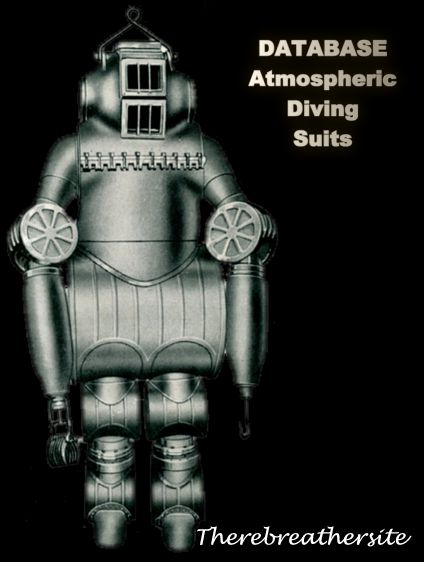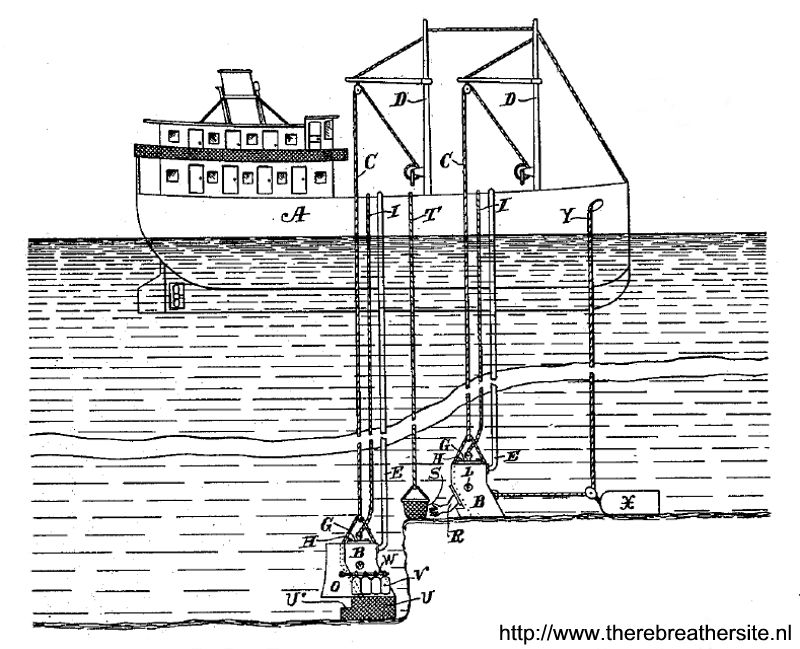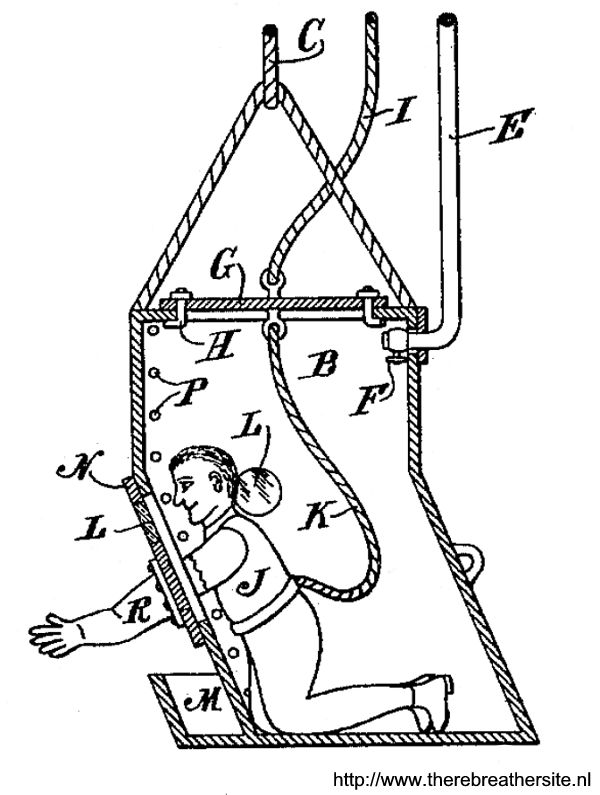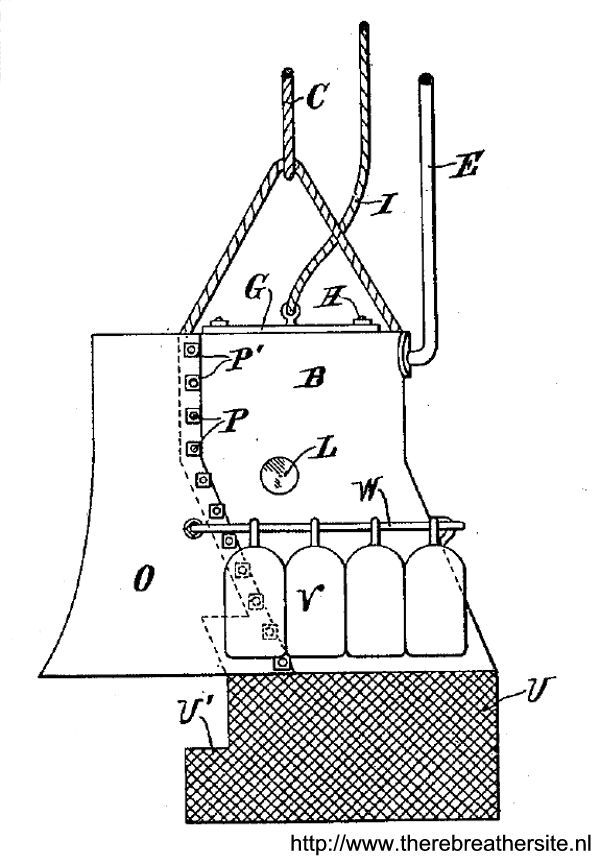
John Watson designed a diving bell with some interesting futures. The diving bell was equipped with a toolbox placed on the outside of the bell. Also Watson made an escape system for the diver. The cover (G) is connected with the vessel by a rope (I) and secured to the diver (J) by rope (K), so that in case the bell gets fouled on the bottom or an accident happens thereto so that it cannot be promptly raised, the diver can unloosen the cover and be hauled up to the surface by the ropes…
A device patented by John L. Watson in 1903 is really as much a small diving-bell as an armoured suit, but it is included here on account of its resemblance to Lethbridge’s apparatus, constructed nearly two centuries earlier.
It consists essentially of a rigid airtight casing in which the diver kneels, putting his hands through two flexible and watertight sleeve-gloves. The casing is supplied with air through a pipe, and is supported and moved from place to place by a barge. A detachable hood can be bolted on to the casing to convert it, so far as shape is concerned, into an ordinary diving-bell. When this is done, the diver can discard his gloves and open a door communicating with the hood.
Watson’s patent can be found here: https://patentimages.storage.googleapis.com/87/5e/8f/35d655d81187e5/US735323.pdf




Therebreathersite was founded by Jan Willem Bech in 1999. After a diving career of many years, he decided to start technical diving in 1999. He immediately noticed that at that time there was almost no website that contained the history of closed breathing systems. The start for the website led to a huge collection that offered about 1,300 pages of information until 2019. In 2019, a fresh start was made with the website now freely available online for everyone. Therebreathersite is a source of information for divers, researchers, technicians and students. I hope you enjoy browsing the content!
